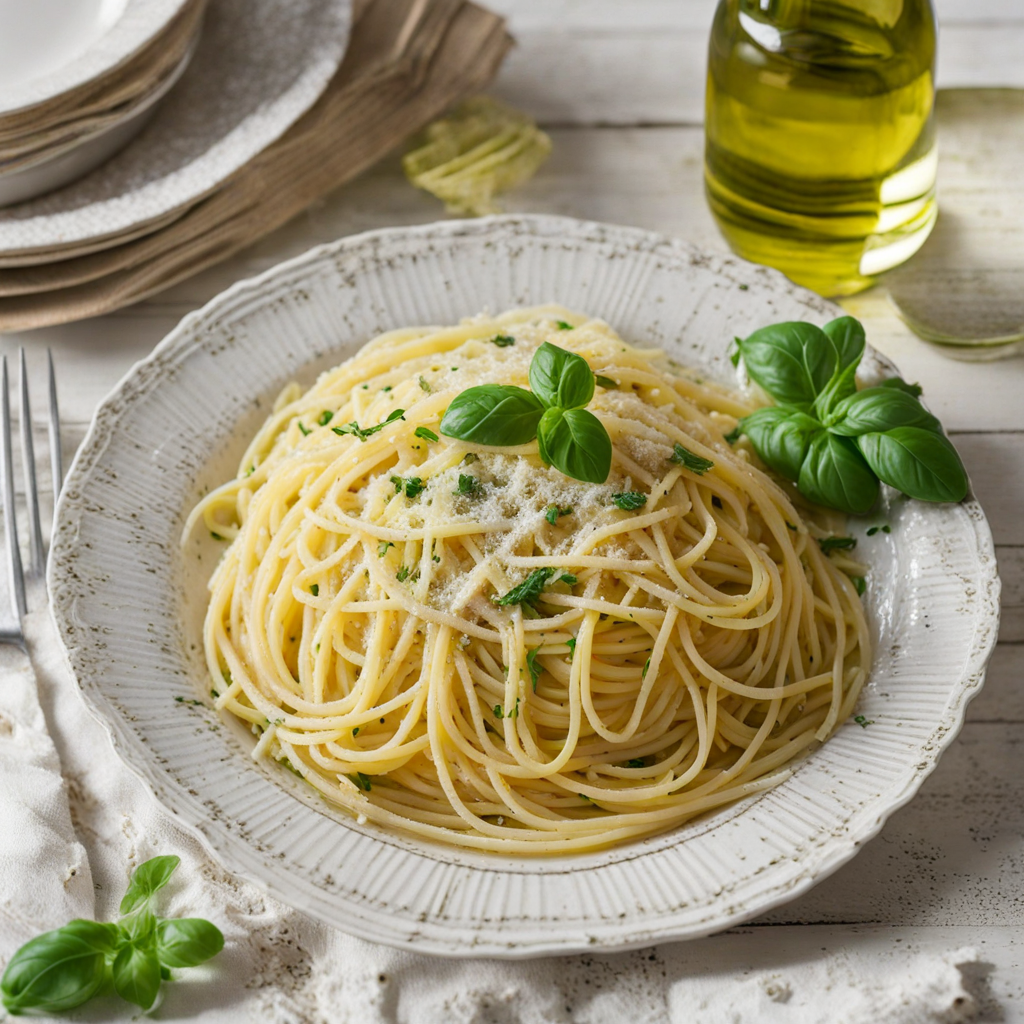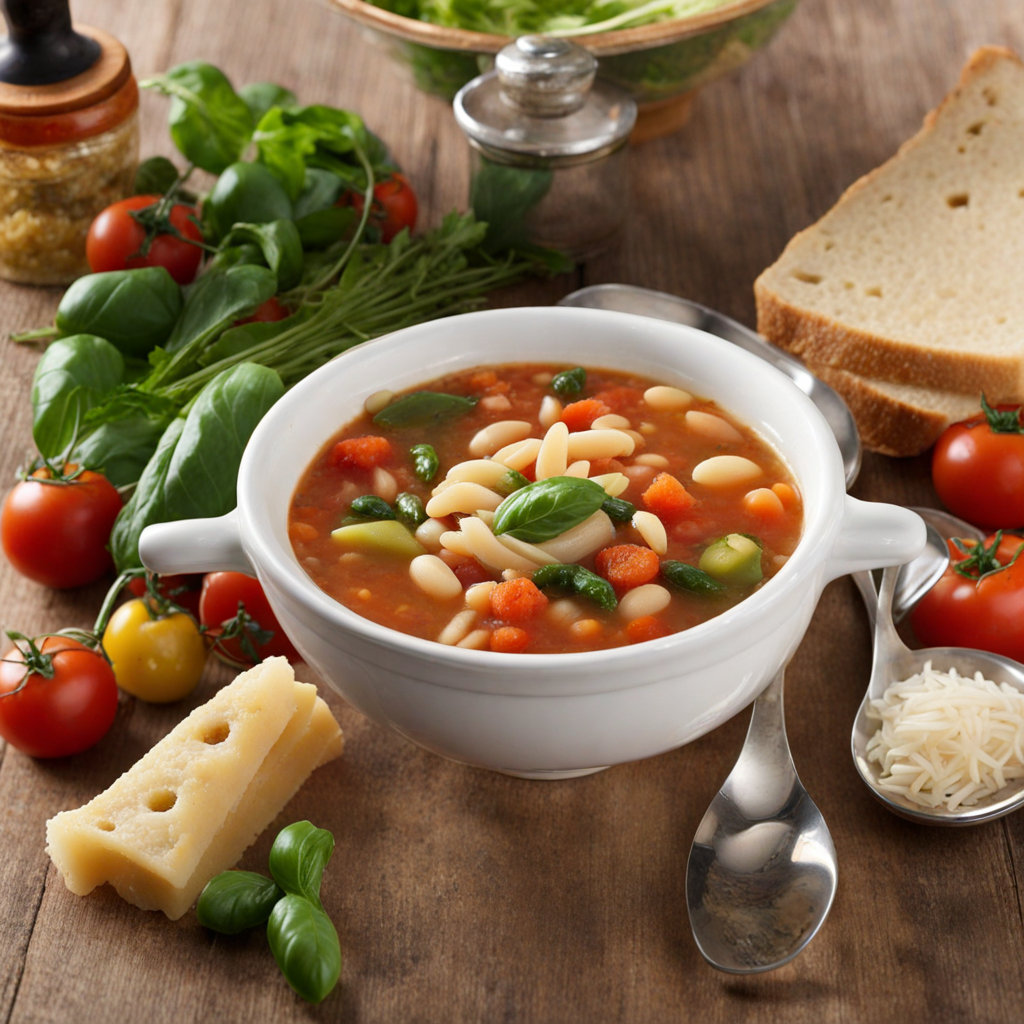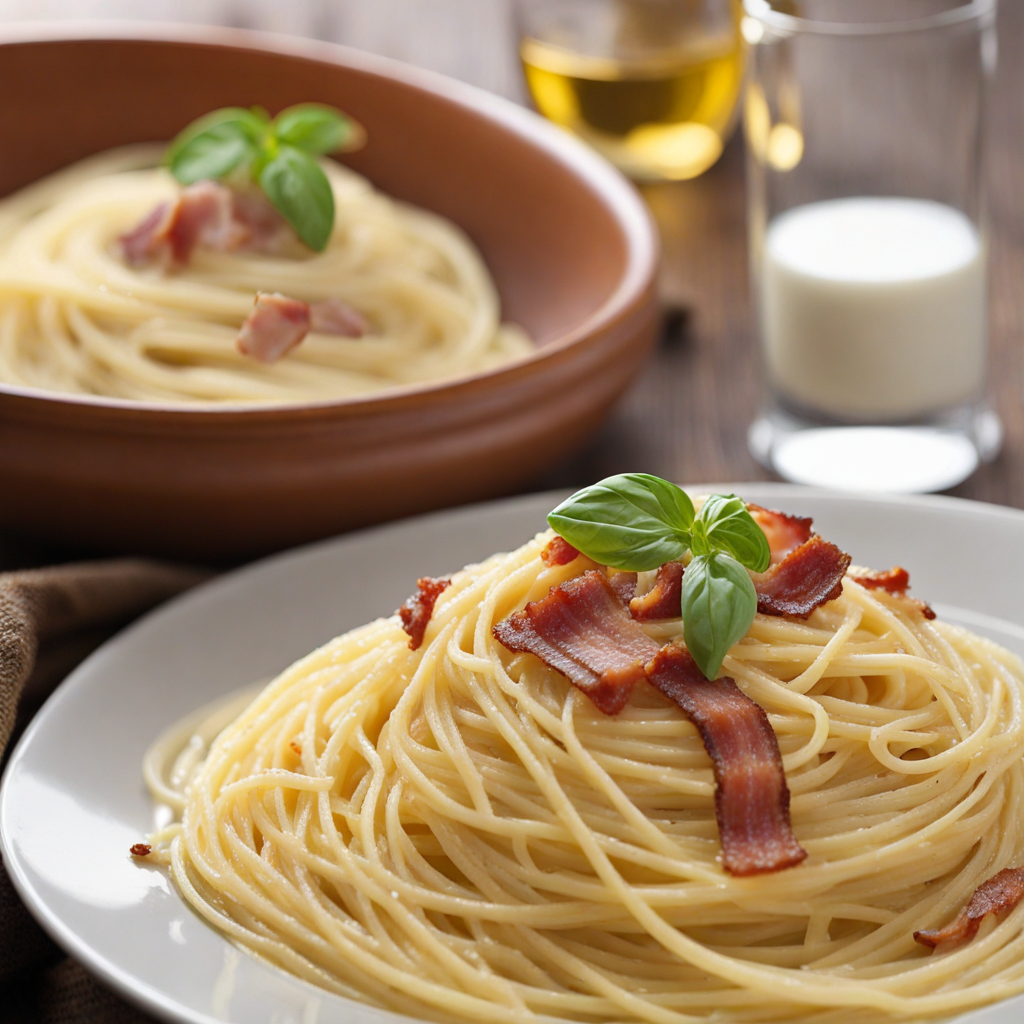Bruschetta
Bruschetta is a delightful Italian appetizer that showcases the simplicity and freshness of its ingredients. Traditionally, it consists of grilled bread, often rubbed with garlic and drizzled with high-quality extra virgin olive oil. The base of this dish is the bread itself, which is typically a rustic loaf, crusty on the outside and soft on the inside. The toasting process gives it a satisfying crunch, creating a perfect contrast to the vibrant toppings that follow. The aroma of the warm bread mingled with the fresh garlic creates an enticing invitation to the senses. One of the most popular variations of bruschetta is topped with a mixture of ripe tomatoes, fresh basil, and a sprinkle of salt. This classic topping celebrates the flavors of summer, with juicy, sweet tomatoes providing a burst of freshness that complements the herbaceous notes of the basil. The combination is often enhanced with a drizzle of balsamic vinegar or a hint of mozzarella cheese, adding layers of flavor and texture. Each bite offers a harmonious balance, making it an ideal starter for any Italian meal. Bruschetta is incredibly versatile, allowing for a wide range of toppings beyond the traditional tomato and basil. Chefs and home cooks alike have embraced creativity, experimenting with ingredients like roasted peppers, mushrooms, or even spreads made from olives and artichokes. Whether served at a casual gathering or a formal dinner, bruschetta embodies the spirit of Italian cuisine—simple yet exquisite, bringing together the best of seasonal produce and quality pantry staples. It's not just a dish; it's an experience that invites you to savor the essence of Italy.
How It Became This Dish
Bruschetta, a beloved Italian antipasto, has a history that stretches back centuries, reflecting the agricultural bounty of Italy and the rustic culinary traditions of its regions. The term "bruschetta" comes from the Roman dialect verb "bruscare," which means "to toast over an open flame." This simple preparation method highlights the essence of the dish, which is primarily characterized by toasted bread topped with various ingredients. Origins in Ancient Rome The origins of bruschetta can be traced back to ancient Rome, where the practice of toasting bread was a common custom. Roman soldiers would toast bread over fire, often enjoying it with olive oil, which was a staple in their diet. This practice evolved over time, particularly in the rural regions of Italy, where local peasants would use whatever ingredients were available to enhance their toasted bread. During the Middle Ages, bruschetta began to take on a more defined form. As trade routes expanded, new ingredients such as tomatoes and garlic became more accessible. It was in the 15th century that the dish as we know it started to emerge, especially in regions like Tuscany. Here, the local bread, often made with a rustic, hearty crust, was perfect for toasting and topping with fresh produce. \n\n Cultural Significance Bruschetta holds a special place in Italian culture, particularly as an antipasto. It embodies the Italian philosophy of "cucina povera," or "poor kitchen," which emphasizes using simple, high-quality ingredients to create flavorful dishes. The adaptability of bruschetta reflects the diverse regional cuisines of Italy, showcasing local ingredients and culinary traditions. In Tuscany, for example, bruschetta is often topped with a mixture of diced tomatoes, basil, garlic, and olive oil, known as "bruschetta al pomodoro." This version celebrates the vibrant flavors of the Mediterranean, with its bright tomatoes and fragrant basil. In contrast, in regions such as Lazio, you might find bruschetta adorned with cured meats or mushrooms, underscoring the local agricultural practices and preserving techniques. The dish also serves as a social connector. It is common to serve bruschetta at gatherings, parties, and family events, reflecting the Italian tradition of sharing food with loved ones. The act of preparing and sharing bruschetta can transform a simple meal into a communal experience, fostering conversations and connections. \n\n Development Over Time As Italy became more unified in the 19th century, the popularity of bruschetta spread throughout the country. With the rise of tourism, especially in the post-World War II era, bruschetta gained international acclaim. Restaurants began to feature it on their menus, and variations emerged as different cultures adopted the concept of toasted bread topped with an array of ingredients. The late 20th century brought about a culinary renaissance in Italy, where traditional dishes were reimagined with modern techniques and ingredients. Bruschetta evolved from a rustic farmhouse snack to a gourmet appetizer. Chefs began experimenting with toppings, incorporating ingredients like balsamic reduction, artichokes, and even seafood. This innovation allowed bruschetta to transcend its humble origins while remaining true to its roots. One significant development in the bruschetta narrative is the introduction of the tomato to Italian cuisine. Native to the Americas, tomatoes were initially met with suspicion in Europe. However, by the late 18th century, they became a staple in Italian cooking. The incorporation of tomatoes into bruschetta not only enhanced its flavor but also solidified its status as a quintessential Italian dish. \n\n Modern Interpretations Today, bruschetta can be found in various forms across the globe, particularly in Italian restaurants and bistros. While traditional toppings remain popular, such as the classic tomato and basil, modern interpretations have expanded the horizons of this versatile dish. Creative chefs are now experimenting with unique flavor combinations, such as avocado and feta, smoked salmon with dill, or even sweet options like ricotta with honey and figs. These contemporary takes on bruschetta showcase not only the adaptability of the dish but also the influence of global culinary trends on traditional Italian cuisine. In addition to its evolution in the kitchen, bruschetta has also made its way into popular culture. It has become a staple in food festivals, cooking shows, and social media, where visually appealing presentations often go viral. The dish’s simplicity lends itself well to presentation, making it a favorite for food bloggers and culinary influencers. \n\n Bruschetta in Italian-American Cuisine In the United States, bruschetta has taken on a life of its own, especially within Italian-American cuisine. However, many interpretations stray from traditional methods. For instance, in some cases, bruschetta is referred to as a form of crostini, often made with smaller pieces of bread and a variety of toppings. Additionally, the use of garlic and olive oil remains a common theme, but American adaptations might include ingredients like mozzarella, pesto, or even barbecue sauce. This evolution reflects the melting pot of American culture, where culinary boundaries are blurred, and creativity is encouraged. Despite the variations, the essence of bruschetta as a dish that celebrates fresh ingredients remains intact. It continues to be a symbol of Italian culinary heritage, representing the importance of community, agriculture, and tradition. \n\n The Global Appeal of Bruschetta As the world becomes more interconnected, the appreciation for bruschetta has only grown. Culinary enthusiasts and home cooks alike are drawn to its simplicity and versatility. The dish serves as an introduction to Italian cuisine for many, acting as a gateway to a deeper understanding of Italy's rich food culture. Cooking classes, food blogs, and cookbooks often feature bruschetta as a fundamental recipe, teaching the importance of quality ingredients and the art of balancing flavors. In many ways, bruschetta embodies the spirit of Italian cooking—an emphasis on freshness, respect for tradition, and the joy of sharing food with others. In conclusion, bruschetta is not just a dish but a reflection of Italy’s rich culinary tapestry, shaped by history, culture, and the passage of time. From its humble beginnings as toasted bread enjoyed by ancient Romans to its modern iterations seen in restaurants around the world, bruschetta remains a testament to the enduring love for good food, community, and tradition.
You may like
Discover local flavors from Italy







